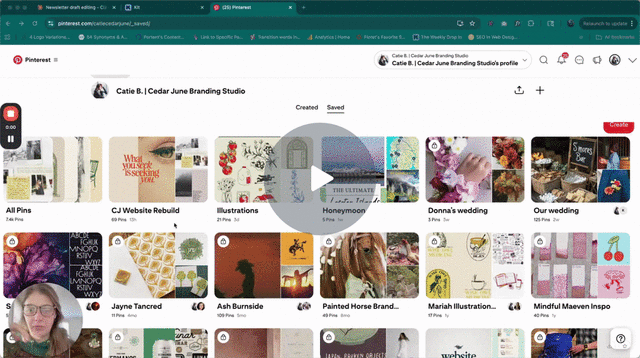My head jerks up, and my eyes open to the open MacBook on my lap. My heavy eyelids find the time in the right corner. 9:47 PM.
I take that a sign and close up the website framework i’ve been chipping away at.
And I'm not having fun.
Like, at all.
Zero inspiration. Just this growing feeling of... blankness? Blah-ness? That thing where you're doing "the work" but it feels like climbing a mountain with no top in sight.
And then it hit me.
I don't have a reference.
Which is wild because with my fine arts degree, I’ve been taught to always work from a reference—whether that's the model in front of you, the still life the professor set up, an image from the library, etc.
Yet here I am, trying to rebuild my website from scratch with no reference at all.
That's not what I teach & that's definitely not what I do for my clients.
But for myself. Without even thinking about it.
I skipped the mood board step.
Didn't take it seriously.
Thought I could just... wing it?
(If you're a real OG, you might remember the wall mood board I had in my old office—the video on my homepage of me pinning things on it. Am I about to remake that video four years later? Maybe?!?)
Am I about to stop typing this newsletter draft and go find the nearest corkboard at whatever store is still open?
I might just.
Because here's the thing: mood boards aren't just decorative, or for woo woo visualization (not that I'm not into that). They're how you move from "I don’t know how to describe what I want" to "oh, that's the vibe."
In last week's newsletter, we talked about how hard it is to conceptualize for yourself.
But visualization? That's honestly not as hard.
You don't have to be creative or a designer to know what you like.
You might not be able to describe something intangible, but you can absolutely identify it. You can look at something and say—yes, that fits the aesthetic.
You form a collection of inspiration, and suddenly it becomes easier to see how and where you can pull ideas for your brand.
But first you have to know where to look.
